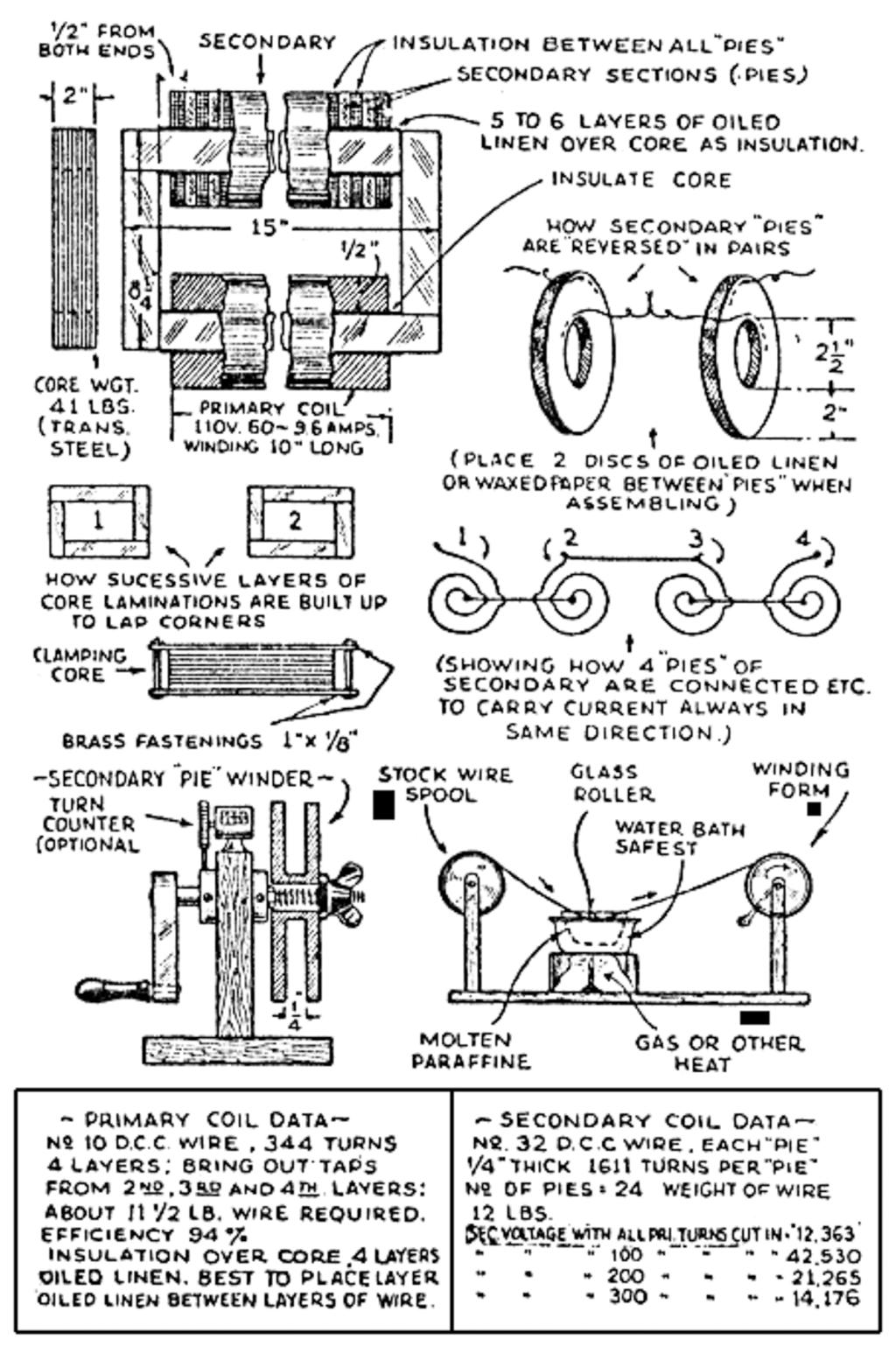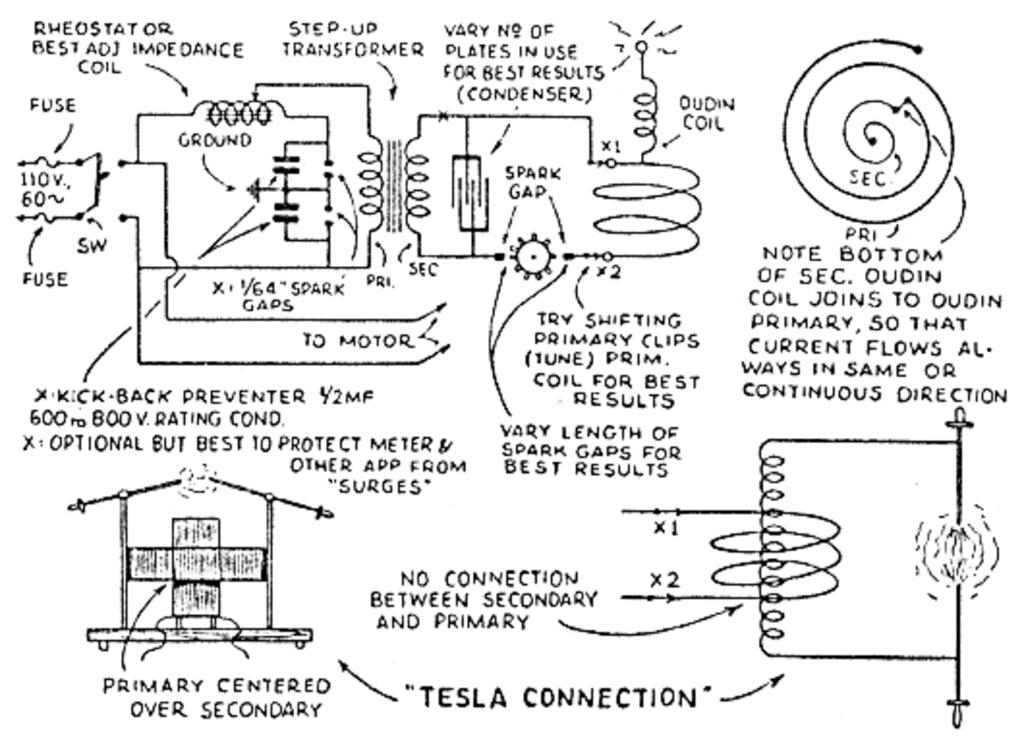TCBA Volume 12 - Issue 1
Page 5 of 18
Data for building such a transformer are included in one of the drawings and, by varying the number of turns used, (bringing out taps from the second, third, and fourth, layers of the primary winding) different secondary voltages may be tried until a maximum spark discharge is obtained from the Oudin coil.
Possibly you may be able to pick up a one - K.W. transformer, delivering ten thousand volts or more, and previously used in the old “spark” type radio transmitters. Some of these are still available from radio shops and “Ham” stations.
One of the next most important problems we have to consider in the Oudin “exciter circuit” is the high-voltage condenser. Probably the cheapest way to obtain this condenser is to build it from window glass; one of the drawings gives the principal dimensions. This condenser should comprise 12 plates of window glass measuring 18 by 24 inches, double thickness glass, (or a sufficient number of smaller size glass plates so as to give the same area of active surface) which are covered on both sides with tinfoil or thin metal sheets. If tin or copper foil is used, it should be cemented to the glass either with shellac or banana oil, using a rubber roller to squeeze it good and flat to the glass, to avoid air-bubbles; since these frequently cause punctures of the glass later. Note that the metal charging foil is cut at least two inches smaller all around than the size of the glass sheet, to minimize brush discharge or leakage over the edges of the glass plates. Note also that every other metal foil leaf connects to one terminal, and the alternate metal leaves to the opposite terminal.



